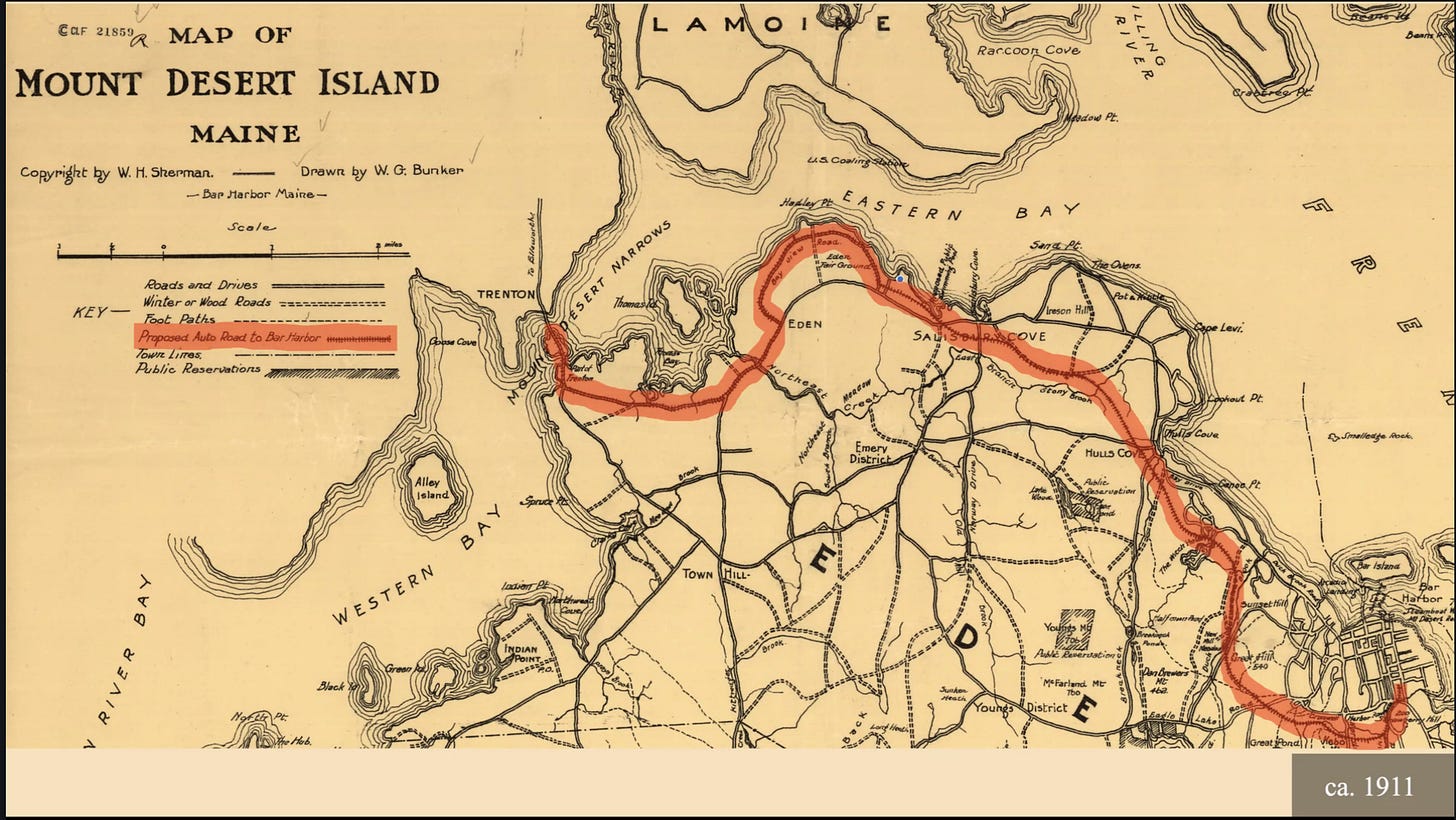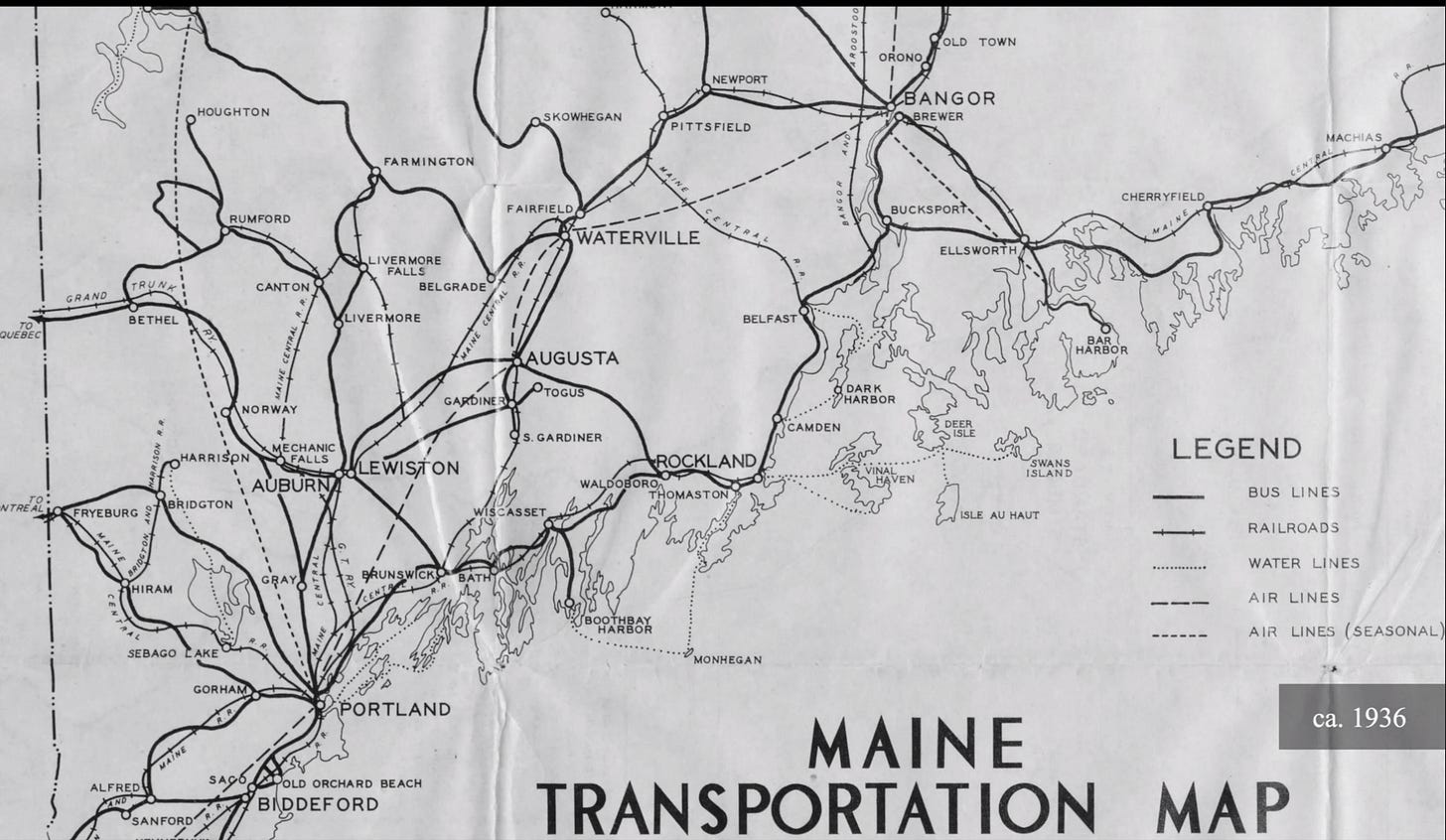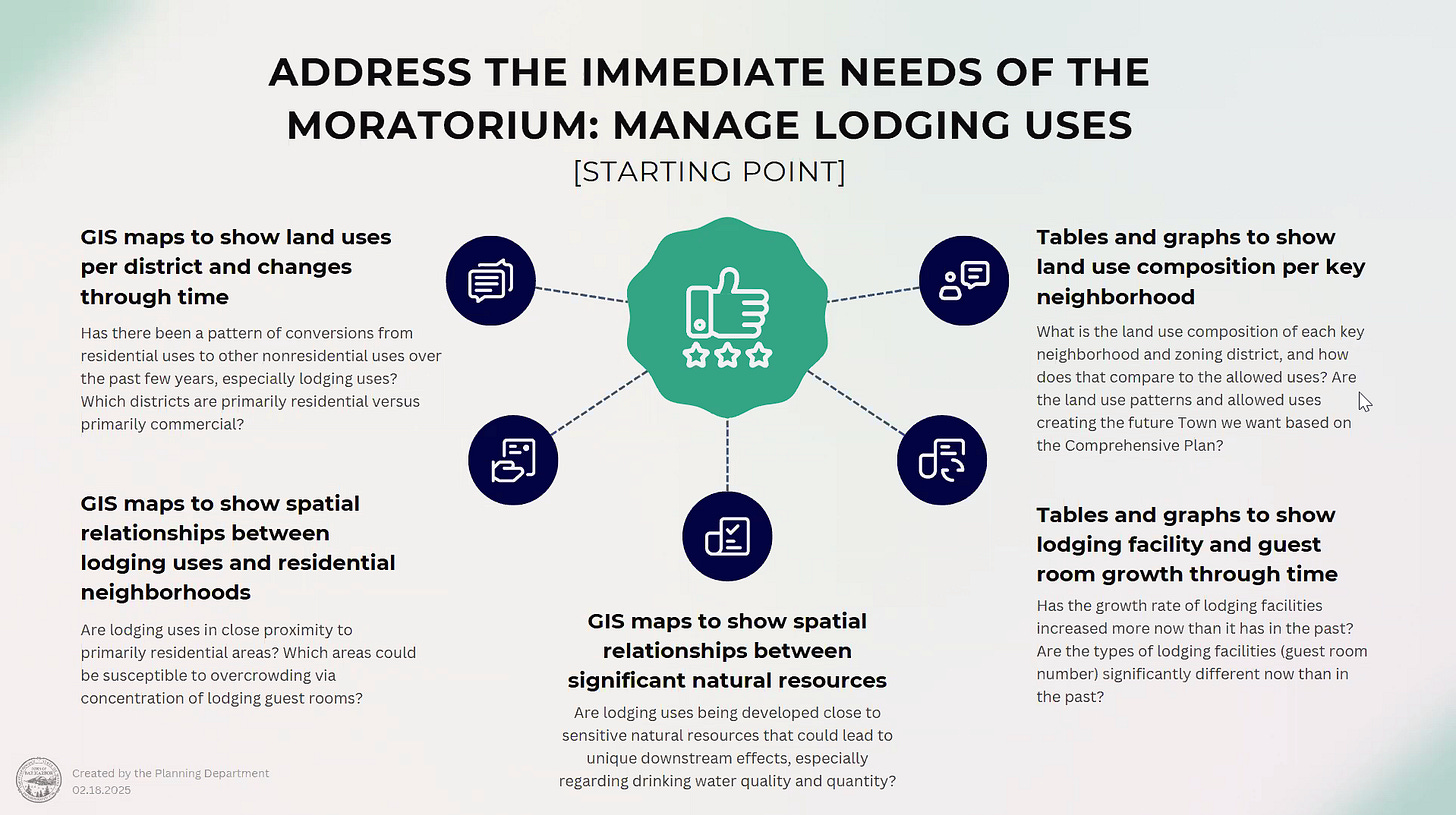The Bar Harbor Story is generously sponsored by First National Bank.
BAR HARBOR—As the Bar Harbor Planning Board worked through lodging moratorium issues, March 27, its members heard a history of transportation and lodging on Mount Desert Island from Dr. Sean Cox, managing editor of the Mount Desert Island Historical Society’s Chebacco.
“It wasn’t an automobile island until it was,” Dr. Cox said of Mount Desert Island.
However, he presented slides and data that showed that cars came early to the heavily rural state of Maine and the island.
”These were fairly heavy early adopters,” Dr. Cox said, “and they are all over the state.”
By 1913, the roads followed and so did bus lines. The ways to get onto the island were changing, drifting away from boats, train, and horse.
This matters in terms of the lodging moratorium because one of the worries often mentioned in town meetings is that of congestion in downtown Bar Harbor, segments of Acadia National Park, and the roads heading onto and off Mount Desert Island, which has one two-lane road, controlled by MaineDOT for vehicles to gain access.
“We’re supposed to look at lodging,” Planning Board Chair Millard Dority said. The board and town staff are gathering information, he stressed, which is why Dr. Cox and Everal Eaton, Bar Harbor Chamber of Commerce director, were presenting.
Potential moratoriums on lodging in the town had been voted down before an emergency moratorium was enacted this fall and then extended. The Bar Harbor Town Council, on February 4, unanimously voted for a 180-day moratorium on lodging.
The moratorium has paused the construction of new lodgings and enlargement of others. It applies in all districts in Bar Harbor. This most recent effort was brought forward by former Town Council Vice Chair and newly elected State Representative Gary Friedmann in November. That original emergency moratorium was renewed and set to expire in March. The language of the moratorium speaks to infrastructure pressure on the town that the moratorium says comes from lodging.
“The same problems we’re seeing had existed before,” Dr. Cox said to the group at its March 27 meeting.
Part of that earlier pressure was due to the changing landscapes and the arrival of motorcars bringing visitors to the island. By 1936 water transportation was starting to fade while cars and busses and air travel was increasing.
“This is a fairly dynamic transportation environment,” he said.
Southwest Harbor was the more established vacationing space until the mid 1800s. In Bar Harbor, early visitors stayed with locals, who rented out their spaces, and often camped out on their own lawns during the summer. This money locals gathered would supplement a farming failure or bad fishing season.
The early cottages were built in the 1860s. The typhoid fever scare of summer 1873 influenced vacationing negatively. Eagle Lake Water was established to combat that and the accommodations in Bar Harbor grew as did the types of accommodations. By 1886, the capacity for all the hotels in town were 2,145 people. That did not count summer cottages or people renting their own homes.
“By the 1920s, the landscape changes again,” Dr. Cox said, but that was because of transportation technology.
The large summer cottages were expensive to maintain, the hotels were starting to go out of business. The tourism industry had shifted from older models. Automobiles changed how people interacted with the environment, changing how people pass through space.
Campgrounds became more popular as did small rental cottages.
Similarly to now, most of the visitors came from the eastern seaboard of the United States. There was a huge spike in population growth in 1900, basically a doubling of year-round residents in Bar Harbor. The Great Depression began to change the island, including a road up Cadillac Mountain to try to keep people coming to the island to visit.
After a period of national scrimping and saving, there is often an increase of tourism, Dr. Cox told planning board members. This happened after the COVID-19 pandemic as well as World War II.
By 1947 the tourism outreach wasn’t to the ultra-wealthy but to the average traveller. Global and national events like the oil crisis in the 1970s have also impacted tourism in town.
Eaton followed the presentation by Dr. Cox with an analysis of recent trends.
“People visited the park almost 4 million times,” last year, Eaton said. This does not mean that were 4 million distinct visitors. If he visited the park personally five times, that would count as five visits.
“The last three years, we’ve been relatively steady,” Eaton said of visits.
“A lot of people locally and beyond think that 2021, 2022, is the new normal,” Eaton said.
The data for 2024 visits will likely come out in May. The Downeast region in that data he shared is more than Mount Desert Island or Hancock County but extends up through the Canadian border.
Almost 80% of people have been to Maine before. In the Downeast region, there are more first-time travelers than across the state. Approximately 55% of travelers to the area have been to Maine before.
Also in the region, hotels, motels, and resorts tend to be where people stay the most in the region, Eaton said. Day travelers are about 13% of visitors to the region.
“I know statewide we were up in winter visitation, down in summer visitation,” Eaton said. He’s curious to see what those numbers will be locally and predicts it will be slightly smaller.
Canadian travellers usually account for between 2-5% of Bar Harbor visits.
“We will see minor effects,” Eaton said of the expected decreased number of Canadian visitors and cancellations. The average visitor books 1-2 months out.
A friend who has a campground in business in Tremont has had zero bookings from Canada and Eastern Europe, Dority said, which is unusual for her.
The conversation also led into discussion about seasonal employees. Dority said that the local workforce for the summer that he remembers seems to have diminished.
Dr. Cox said that when he was going through high school there was an Acadia National Park initiative to hire locally.
Vice Chair Ruth Eveland said when looking at trends, size of the lodging might not be as much of a concern but wondered about location positives and negatives: should things be downtown or more spread out?
Eaton said one of the nice things about Bar Harbor is the diverse options of lodging types.
Dority said the presentation helped him realize that the tourism economy was a bit more fragile than he originally realized.
“We’re really crowded in a very small circle, right?” Dority said. That’s a very small section of town. “And it seems to me that we could develop wisely to get crowds to get away.”
Eaton said that other towns with tourism management plans, such as Sedona, California, do as Dority’s suggest, trying to get people into other areas and away from overly congested spots.
DISCUSSION
What has a place in Bar Harbor? That was a question that the group began to focus on as discussion also wandered into a potential ban on vacation rentals that aren’t primary residences, which are already limited in Bar Harbor. There was a short discussion of if it was possible and if they wanted to prevent people from combining lots, tearing down a residence, and building lodging on those lots.
Short-term rentals are not part of the moratorium.
What sorts of lodging types does the town want and where was focused on again.
Planning Director Michele Gagnon said it was important to look at where lodging was already existing and being built and if those lodgings were intruding on residential neighborhoods. The group also looked at definitions of various types of lodging.
In public comment, Town Council Chair Valerie Peacock said the scale and impact is intense because of individual choices and it all focuses her on how important zoning is.
“There’s no secret spaces anymore,” she said. That’s because the visitors are everywhere.
This contradicts the earlier discussion about trying to get tourists out of the congested circle within Bar Harbor and illustrates the complexity of the issue and need for data.
Similarly, it’s been reported that a majority of visitors still stick to the Park Loop Road and well known sites on Ocean Drive in Acadia National Park, the Bass Harbor Light and Cadillac Mountain rather than checking out—say, Kebo Hill—or even, as cited earlier in the same meeting walking down Main Street beyond Mount Desert Street and getting visitors out of the main circle of congestion closer to the waterfront. Many pedestrian visitors don’t make it up Cottage Street past the postal office.
“We’re not here to talk about today, really. We’re here to talk about tomorrow and for years,” Dority said.
The town’s road map for the future—its comprehensive plan—will go before voters in June. Both the town council and warrant committee have recommended its adoption.
Bar Harbor Community and Housing Planner Cali Martinez said the town staff is working on residential conversions as well to understand what’s happening on properties that are no longer strictly residences.
“This is tough. This is tough,” Dority said at the end of the meeting.
They anticipate having a public safety discussion at the next workshop. Public works, which Dority called critical in understanding lodging uses and infrastructure pressures, has not yet been scheduled.
Update/Correction: The Bar Harbor Town Council did not formally recommend the comprehensive plan until later on April 1. Previously it had moved it forward through other steps.
LINKS TO LEARN MORE
The planning board workshop is not currently uploaded to Town Hall Streams. There was a glitch in its recording.
Follow us on Facebook. And as a reminder, you can easily view all our past stories and press releases here.
If you’d like to donate to help support us, you can, but no pressure! Just click here (about how you can give) or here (a direct link), which is the same as the button below.
If you’d like to sponsor the Bar Harbor Story, you can! Learn more here.




























